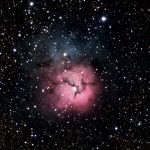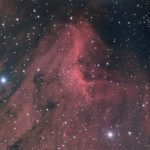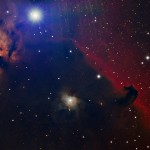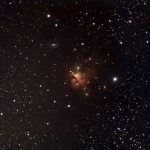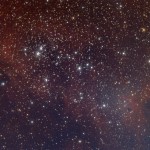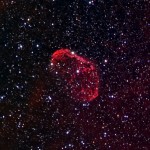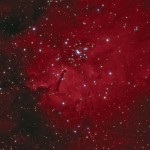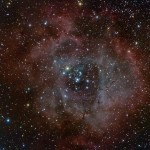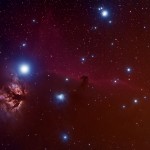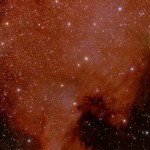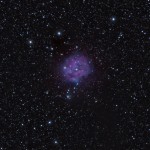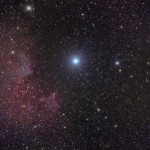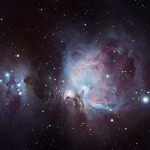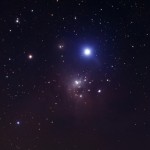
Nebulae are regions of dust, hydrogen, and other ionized elements and gases that exist throughout our own Milky Way galaxy, as well as other galaxies. The images presented here are all located within our own Milky Way, and hence are much closer to us than the images of other galaxies presented on the website. These nebulae are located from several hundred to several thousand light years from Earth, as opposed to the millions of light years that compose the distance to our neighboring galaxies. Nebulae are often star forming regions, and come in many forms.
Diffuse nebula, like most of the images here, make up many of the known nebulae in the Milky Way. The light from these nebulae can be divided into emission and reflection. Emission, or HII, regions emit light due to ionized gases within them, whereas reflection regions do not actively emit light, but are instead lit by nearby stars.
Dark nebulae are similar to reflection nebulae, but block out the light emitted from objects that appear behind the nebulae, much like a cloud blocks out the sun on Earth.
Planetary nebulae are technically emission nebulae, but are much denser and compact than diffuse nebulae. They are formed when giant branch stars transform to white dwarfs, much as our sun is expected to do in a few billion years.
Finally, supernova remnants, such as the famous Crab Nebula, also form nebulae in our night sky.
- M42: Orion Nebula
- M78: Reflection Nebula in Orion
- NGC 7023: Iris Nebula
- M20: Trifid Nebula
- IC5070: Pelican Nebula
- Horsehead & Flame Nebulae
- NGC 1579
- IC1848: Soul Nebula
- Crescent Nebula
- Sh 2-86
- Bubble Nebula
- Rosette Nebula
- Horsehead & Flame Nebulaae
- North America Nebula
- Cocoon Nebula
- IC 59: Gamma Cas Nebula
- Soul Nebula
- M16: Eagle Nebula
- Great Nebula in Orion
- IC1396: Elephant’s Trunk
- IC 348
- M17: Omega Nebula
- M27




